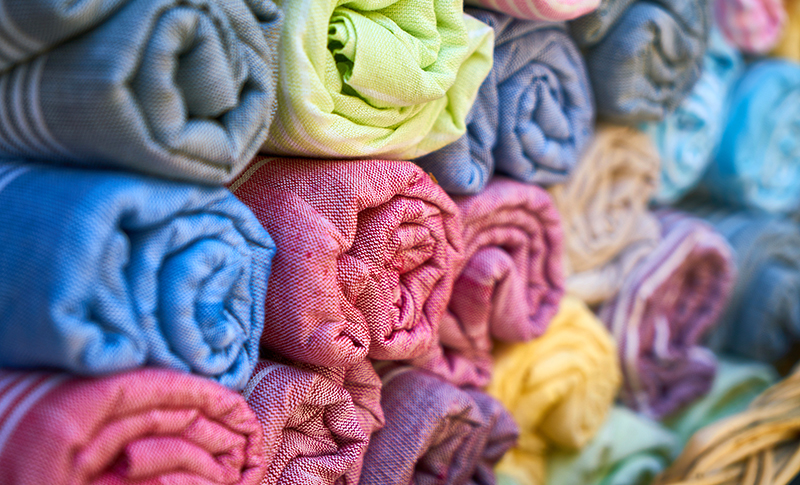Textiles

Oklahoma agriculture does more than just feed us. It also puts clothes on our backs. Clothes do more than reflect your style. They are an important form of protection. Clothing made from cotton keeps you cool in the summer. Cotton absorbs moisture and allows it to evaporate away from your body. Wool is a good choice when it's cold outside. Wool clothing is made from the wool of sheep. Wool will not freeze when it gets wet like other fabrics do. When it is stretched, it springs back into shape. Wool also burns slower than any other fabric.
Cotton, a product of Oklahoma agriculture, is the most common natural textile in use today. No one knows exactly how old cotton is. Scientists searching caves in Mexico found bits of cotton bolls, or seed pods, and pieces of cotton cloth that proved to be at least 7,000 years old. They also found that the cotton itself was much like that grown in America today. In 2015, Oklahoma cotton fields produced 374,000 bales of cotton. A bale is about the size of a refrigerator and weighs 480 pounds. Most Oklahoma cotton is grown in the southwestern part of the state. The top five cotton-producing counties in 2015 were Jackson, Tillman, Harmon, Caddo and Beckham Counties.
Sheep have been providing meat and clothing to people for over 10,000 years. Oklahoma sheep growers sheared 17,000 sheep in 2015. The fleece of these sheep provided about 95,000 pounds of wool. The largest numbers of sheep and lambs are produced in north central Oklahoma. In 2016 the top Oklahoma counties in sheep and lamb production were Kay, Caddo, Bryan, Craig and Cherokee Counties.
Wool can also be made from the hair or fur of goats, rabbits, llamas, alpaca, and even a semi-wild animal from the Andes mountains called a vicuna. Wool can have a wide range of natural colors and textures, depending on which animal produced the fleece.
Linen is made from the stalks of the flax plant. Most of the flax grown for linen is grown in European countries like Russia, France, the Netherlands and Ireland. Flax grown in the US is produced mostly for its seed. Linseed oil used for making linoleum and many other products comes from flaxseed.
You can find out what your clothes are made from by looking at the garment's label. By law each garment must be labeled to show the generic name of the fabric from which the garment is made, the percentages of fibers present, the manufacturer's name or registered identification number, the country where the garment was made and instructions for caring for the garment. Sometimes this information will be on more than one label.
